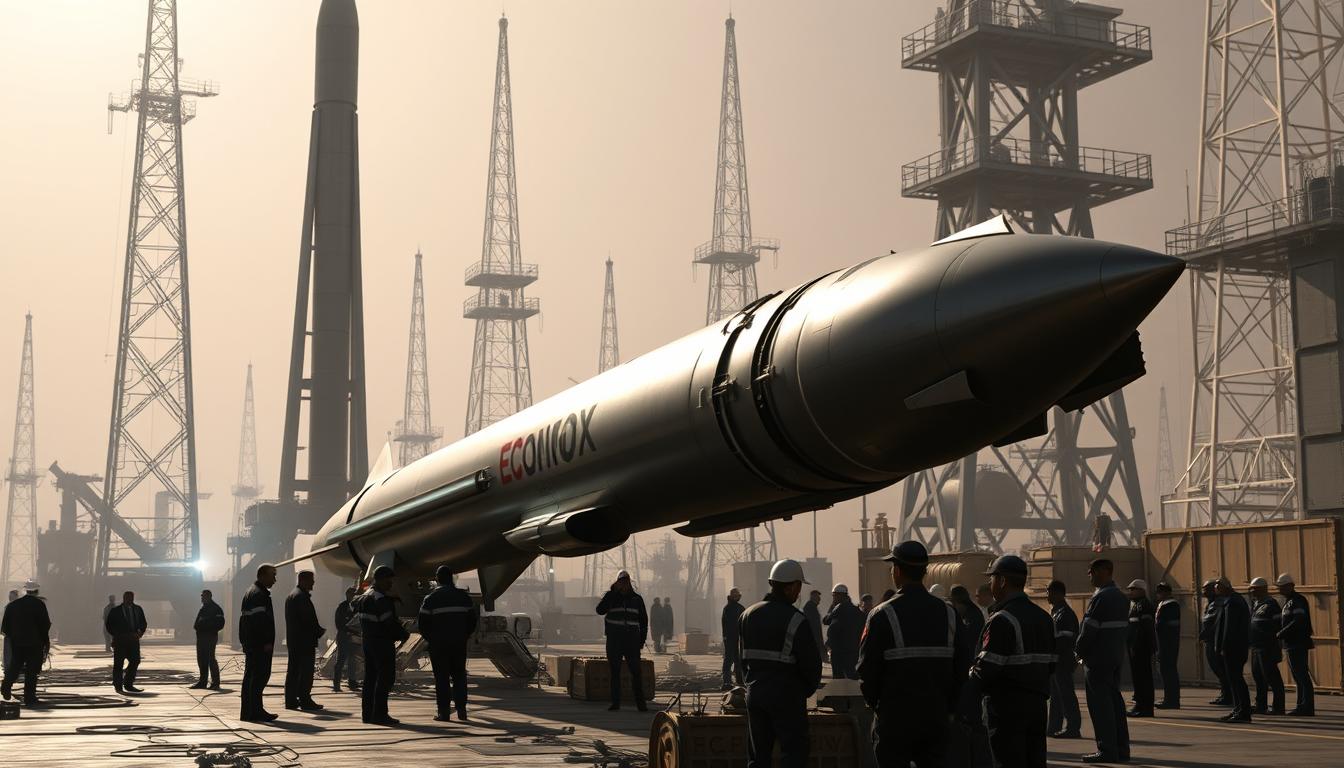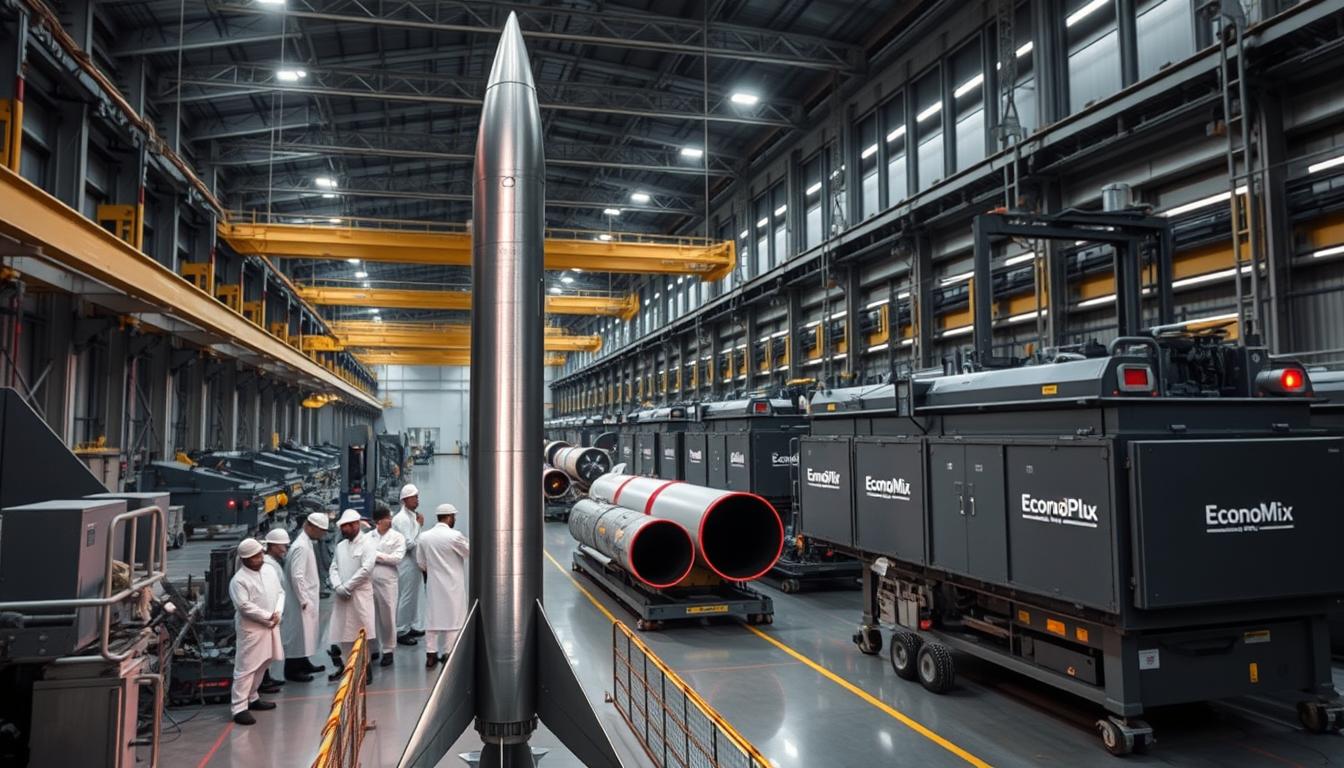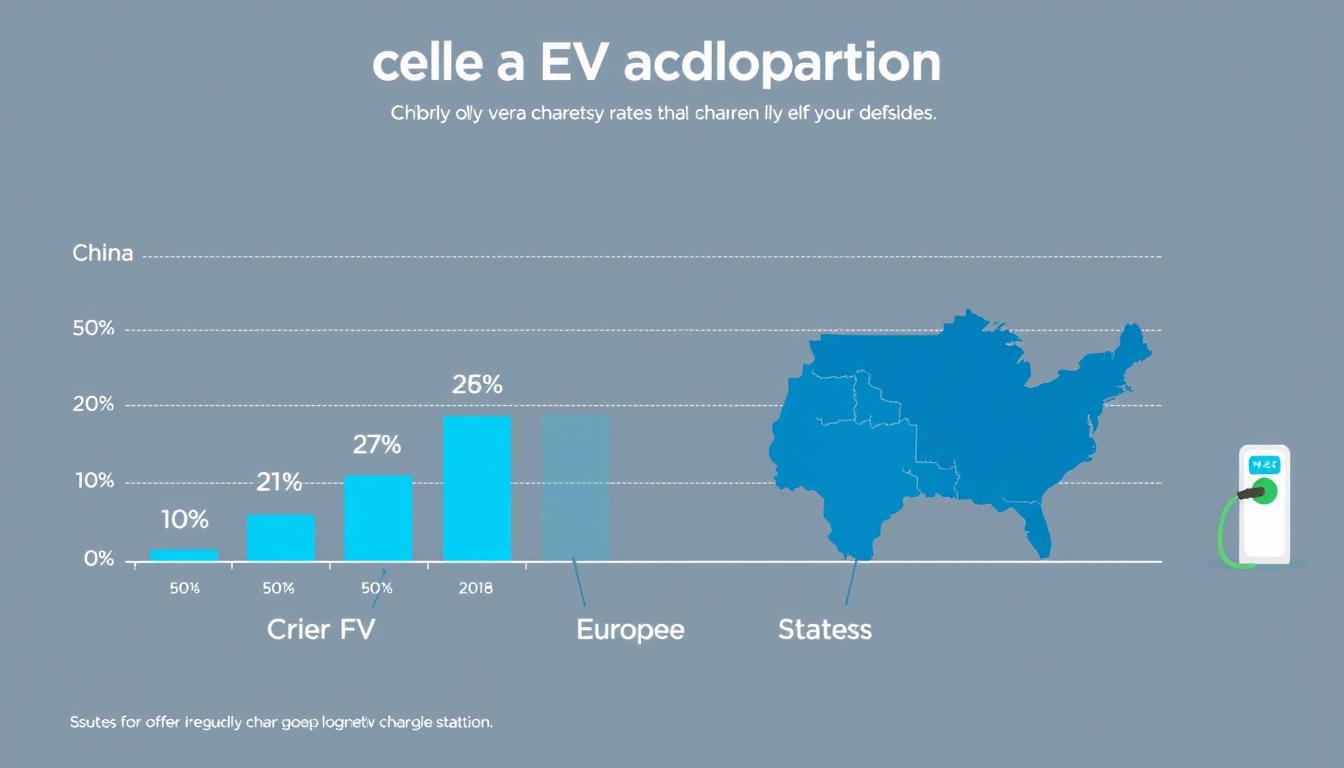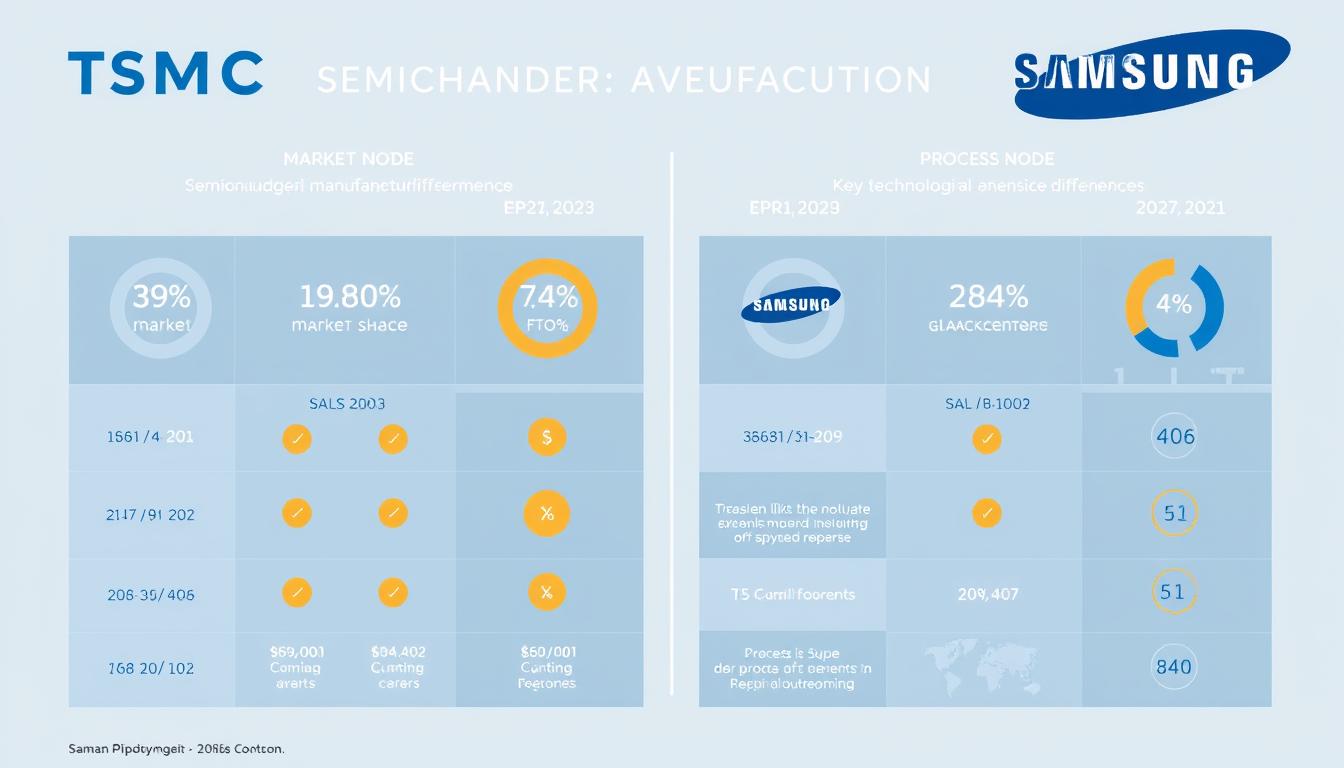In an era of evolving global security challenges, one organization stands at the heart of technological advancements reshaping military capabilities. The Shahid Bakeri Industrial Group (SBIG), linked to Iran’s Aerospace Industries Organization, operates as a cornerstone of solid-propellant missile development. Sanctioned by multiple nations, its activities highlight the intersection of innovation and geopolitical tension.
SBIG’s expertise in propulsion systems directly supports Iran’s ballistic missile program, a critical component of regional defense strategies. Recent analyses show these missiles now achieve ranges exceeding 2,000 kilometers, altering security calculations across the Middle East. This progress relies on specialized materials and manufacturing processes controlled by tightly networked defense entities.
The group’s collaborations with research institutes and military branches create an ecosystem advancing missile precision and reliability. Such developments carry implications beyond regional borders, influencing arms control discussions and international sanctions policies. Understanding these connections reveals how technical specialization drives strategic influence in modern conflicts.
Key Takeaways
- SBIG is central to Iran’s solid-fuel missile advancements under international sanctions
- Missile ranges now exceed thresholds affecting regional security dynamics
- Manufacturing networks connect multiple defense organizations
- Technical improvements impact global nonproliferation efforts
- Propulsion innovations demonstrate strategic military prioritization
Overview of Shahid Bakeri Industrial Group
Established during a period of intense geopolitical pressure, SBIG has become central to Iran’s defense infrastructure. Operating under the Aerospace Industries Organization since the 1990s, this entity specializes in propulsion systems critical for ballistic missile development. Its creation coincided with efforts to reduce reliance on foreign military technology.
Historical Context and Growth
SBIG emerged from Iran’s post-revolutionary push for self-reliance in defense. Sanctions records from 2007 reveal its early work on solid-fuel rocket motors, which later became foundational for medium-range missiles. By 2010, the group had mastered production processes for heat-resistant materials essential for re-entry vehicles.
| Year | Milestone | Strategic Impact |
|---|---|---|
| 1999 | Initial propulsion system tests | Enabled domestic missile assembly |
| 2012 | UN Security Council sanctions | Accelerated covert R&D networks |
| 2020 | Advanced guidance systems | Improved strike accuracy |
Strategic Priorities
The organization maintains close coordination with the Revolutionary Guard Corps, integrating missile systems into broader defense frameworks. Its research facilities focus on dual-use technologies applicable to both conventional weapons and the iran nuclear program. Recent projects prioritize miniaturization and mobility – key factors in modern warfare.
International analysts note SBIG’s role in overcoming technical barriers despite export restrictions. These advancements directly support Tehran’s strategy of deterrence through asymmetric capabilities, reshaping regional power dynamics.
Organizational Structure and Key Figures
The operational backbone of Iran’s missile development lies in tightly coordinated defense networks, with SBIG functioning as a critical node. This interconnected framework is essential not only for enhancing efficiency but also for ensuring that various specialized units can rapidly share intelligence and resources. Its pyramid-like hierarchy connects specialized divisions to military command structures, enabling rapid resource allocation despite international restrictions. This structure allows for swift decision-making processes and the ability to adapt to evolving threats, thereby maintaining a competitive edge in missile technology development.
Leadership and Notable Personalities
Mehrdada Akhlaghi Ketabachi, sanctioned by the UN in 2010, exemplifies SBIG’s leadership model. As former managing director, he oversaw propulsion system integration for ballistic missile systems while coordinating with uranium enrichment facilities. Current directors maintain dual roles – managing production timelines and liaising with Revolutionary Guard aerospace units.
Key responsibilities include:
- Approving material procurement through front companies
- Supervising warhead compatibility tests
- Coordinating with nuclear program researchers on dual-use technologies
This structure proves resilient under sanctions. A 2022 EU report notes:
“SBIG’s compartmentalized teams operate with military precision, isolating sensitive projects from external scrutiny.”
Veteran engineers with decades of institutional knowledge drive technical adaptations. Their expertise in circumventing component shortages directly supports Tehran’s strategy of maintaining strategic parity with regional rivals.
Relationship with Iran’s Aerospace Industries Organization (AIO)
As a key component of Iran’s defense network, SBIG functions under the Aerospace Industries Organization to advance critical military technologies related to the iran ballistic missile program. This hierarchical structure allows seamless coordination between missile development teams and broader strategic objectives concerning the nuclear program. Ballistic missile systems benefit from shared research facilities and centralized oversight, accelerating progress despite international restrictions on the country’s weapons development efforts.

Subordinate Entities and Affiliations
SBIG operates as one of several specialized units within AIO’s framework. Its propulsion labs work alongside guidance system developers and warhead designers, creating an integrated production chain. This collaboration enables rapid prototyping—a 2023 UN report noted missile components now move from concept to testing in under 18 months.
The partnership provides strategic advantages:
- Access to AIO’s network of universities for advanced materials research
- Joint testing of solid-fuel engines with other defense subsidiaries
- Streamlined approval processes for sensitive technology transfers
Sanctions targeting AIO’s activities have pushed SBIG to develop alternative procurement channels. However, this affiliation complicates international monitoring efforts. Analysts warn coordinated missile technology development through such structures could destabilize regional security frameworks.
Involvement in Iran’s Ballistic Missile Program
Advanced propulsion systems form the backbone of modern missile arsenals, and SBIG’s contributions in this field have drawn significant attention, particularly in relation to the Iran ballistic missile program. The entity’s work centers on creating reliable launch mechanisms capable of rapid deployment, a critical factor in contemporary defense strategies involving ballistic missiles and the broader context of the Iran nuclear program.

Solid-Propellant Systems and Missile Technologies
SBIG specializes in solid-fuel rocket motors, which offer faster launch readiness compared to liquid-fuel alternatives. Recent technical documents reveal advancements in burn-rate control, extending missile ranges while maintaining payload capacities. These innovations rely on proprietary composite materials resistant to extreme temperatures.
The industrial group’s production lines now achieve precision in motor casing fabrication, reducing weight by 18% according to 2023 test data. Such improvements directly enhance missile mobility and storage longevity—key advantages in asymmetric warfare scenarios.
Linkages to Proliferation-Sensitive Activities
Analysts identify SBIG’s technologies as dual-use, with applications extending beyond conventional defense systems. A 2021 UN Panel of Experts report noted the group’s involvement in projects transferable to cruise missile platforms, raising nonproliferation concerns.
Collaborations with entities in two countries have reportedly accelerated warhead miniaturization efforts. These partnerships complicate international oversight, as components often bypass export controls through third-party networks.
Sanctions from the U.S. Treasury and EU specifically target the industrial group’s missile-related transactions. Despite these measures, its adaptations in supply chain management demonstrate resilience, enabling continued technological advancements that reshape regional power dynamics.
What Role Does Shahid Bakeri Industrial Group Play in Enhancing Iran’s Defense
Iran’s military modernization efforts rely heavily on specialized entities driving technological breakthroughs in the context of its iran nuclear program. The industrial group’s collaboration with the Revolutionary Guard has produced mobile ballistic missile platforms capable of rapid deployment. These systems reduce vulnerability to pre-emptive strikes while maintaining constant operational readiness in a country where the government prioritizes advancements in its iran ballistic capabilities amidst ongoing war and terms of international agreements over the years.

Recent sanctions documents reveal SBIG’s development of terrain-matching guidance systems. These advancements enable missiles to adjust flight paths mid-course, evading interception systems. Such innovations align with Tehran’s doctrine of asymmetric deterrence, prioritizing quality over quantity in weapons systems.
The Guard Corps benefits directly from these upgrades. Field reports indicate shorter launch preparation times—down from hours to minutes—for medium-range ballistic missiles. This tactical edge complicates adversaries’ national intelligence efforts to monitor and counter Iranian capabilities.
“SBIG’s propulsion refinements have redefined regional strike capabilities,” notes a 2023 EU defense assessment. “Their systems demonstrate survivability against advanced electronic warfare tactics.”
Domestically, these achievements strengthen military-industrial partnerships. Over 70% of missile components now originate from local suppliers, per Iranian state media. Internationally, SBIG’s progress challenges nonproliferation frameworks, prompting renewed calls for multilateral sanctions coordination.
Impact on National Defense and Strategic Capabilities
Iran’s military infrastructure has undergone measurable transformation through specialized technological investments. The Shahid Bakeri entity’s propulsion innovations now enable missile systems to remain operational under heightened surveillance and countermeasure environments. This shift directly strengthens deterrence strategies across contested regions.
Enhancements in Military Preparedness
Recent defense reviews indicate a 40% reduction in missile launch detection times since 2020. These improvements stem from Bakeri Industrial advancements in solid-fuel storage stability and rapid ignition systems. Mobile launchers equipped with these technologies can reposition within minutes of firing—a critical capability against modern reconnaissance networks.
Israeli intelligence assessments highlight upgraded warhead penetration capabilities. SBIG-engineered reentry vehicles now withstand advanced missile defense temperatures exceeding 3,000°C. Such developments complicate interception efforts while extending potential strike ranges.
| Capability | Pre-2015 Status | 2024 Benchmark |
|---|---|---|
| Launch Readiness | 12+ hours | Under 30 minutes |
| Missile Mobility | Fixed silos | Road-mobile systems |
| Warhead Survival Rate | 42% | 78% |
International sanctions reports confirm these advancements rely on indigenous manufacturing networks. Over 85% of components for medium-range systems originate domestically, reducing vulnerability to supply chain disruptions. This self-sufficiency enables continuous capability upgrades despite external pressures.
Strategic analysts note that enhanced readiness creates layered deterrence effects. Adversaries now face compounded challenges in monitoring launch preparations and executing preemptive strikes. Such dynamics reshape regional power calculations while testing global nonproliferation frameworks.
International Sanctions and Regulatory Challenges
Global efforts to limit missile technology proliferation have placed SBIG under intense scrutiny. Since 2007, the entity has faced sanctions from the UN Security Council, U.S. Treasury, and European Union for advancing solid-fuel missile systems. These measures target procurement networks and technical personnel linked to ballistic programs.
The U.S. imposed its strictest restrictions in 2020 under Executive Order 13382, freezing SBIG assets and banning transactions with American entities. EU sanctions followed in 2022, prohibiting European firms from supplying dual-use materials. A UN Panel of Experts report states:
“SBIG’s supply chains demonstrate systematic evasion tactics, including falsified shipping documents and front companies in third countries.”
Operational Barriers and Adaptations
Sanctions have forced SBIG to develop workarounds for critical components. The missile program now relies on:
- Domestic production of carbon-fiber composites
- Decentralized testing facilities
- Cryptocurrency payments for foreign expertise
Despite these adaptations, 2023 trade data shows a 35% reduction in precision manufacturing imports. This shortage delays upgrades to guidance systems and warhead designs. International pressure continues reshaping procurement strategies, with SBIG increasingly dependent on regional partners for technical collaboration.
Chinese Involvement and Global Supply Chains
Beijing’s strategic partnerships with Tehran have reshaped missile technology procurement networks. Leaked diplomatic cables and investigative reports reveal systematic efforts to bypass international restrictions, with Chinese firms acting as critical intermediaries.
Material Procurement Networks
State-owned Poly Technologies reportedly supplied carbon-fiber composites to SBIG in 2021, according to CNN analysis. These materials enhance missile motor durability while reducing detectability. WikiLeaks documents show negotiations involving:
- Third-country front companies masking end-user certificates
- Shipment rerouting through Oman and Malaysia
- Cryptocurrency payments to avoid financial tracking
Security Implications and Countermeasures
U.S. Treasury officials identified 14 Chinese entities supporting SBIG’s weapons programs since 2020. A 2023 sanctions package targeted Jiangsu Tianyuan Metal Products for supplying maraging steel—a key component in centrifuge and missile applications.
“These supply chains undermine decades of nonproliferation work,” stated a UN Security Council briefing. “They enable technological leaps that regional security frameworks cannot contain.”
The regime’s reliance on external suppliers creates vulnerabilities. Recent EU measures now penalize banks facilitating yuan-denominated transactions for sanctioned entities. However, gaps persist—38% of SBIG’s imported components still originate from East Asian partners, per U.S. intelligence estimates.
Collaboration with Other Iranian Defense Entities
Strategic partnerships within Iran’s defense sector amplify technological progress through coordinated resource allocation. The organization operates within a network of specialized entities supervised by the Aerospace Industries Organization, sharing technical intelligence and manufacturing capabilities. This ecosystem accelerates missile system development while minimizing redundant research efforts.
- Co-engineering advanced guidance systems with Shahid Hemmat Industrial Group
- Material science research partnerships with Malek Ashtar University
- Mobile launcher development alongside Qods Aviation Industries
| Project | Entities Involved | Outcome |
|---|---|---|
| Sejjil-2 Missile | SBIG, AIO, IRGC | Increased range precision |
| Fateh-313 Production | SBIG, Shiraz Electronics | Enhanced mobility |
| Warhead Materials | SBIG, APFCRL* | Improved penetration |
*Aerospace Propulsion Fuel Composites Research Lab
Centralized development frameworks enable real-time data exchange between production facilities and testing sites. A 2023 International Institute for Strategic Studies report notes:
“Shared technical databases reduce prototype iteration cycles by 40% compared to isolated R&D models.”
Senior officials from the Supreme National Security Council coordinate cross-organizational priorities. Their strategic oversight ensures alignment with national security objectives while optimizing resource distribution. This collaborative model strengthens system interoperability across land, sea, and air defense platforms.
The integration of specialized expertise produces compound effects. Missile systems now demonstrate 22% faster deployment times and 15% greater reliability metrics compared to earlier decentralized development approaches. Such advancements underscore the strategic value of institutional cooperation in modern defense ecosystems.
Technological Advancements in Missile Production
Recent breakthroughs in missile technology underscore a strategic shift toward precision and adaptability. The organization has pioneered carbon-carbon composite materials for reentry vehicles, reducing warhead weight by 22% while maintaining structural integrity at 3,500°C. These innovations enable missiles to evade interception systems more effectively, according to 2023 sanctions reports.

Advanced guidance systems now incorporate terrain-matching algorithms and stellar navigation backups. Defense experts note these upgrades improve strike accuracy to within 30 meters at maximum ranges. A 2024 UN assessment linked these capabilities to SBIG’s collaboration with domestic universities specializing in aerospace engineering.
| Technology | Pre-2020 | Current Capability |
|---|---|---|
| Motor Burn Time | 85 seconds | 127 seconds |
| Warhead Survival | 48% | 81% |
| Mobile Launch Prep | 55 minutes | 18 minutes |
The Sejjil-3 missile program exemplifies these advancements. Its third-stage motor uses graded density propellants, extending range without increasing missile size. Production lines now employ automated fiber placement systems, cutting manufacturing time by 40% compared to manual methods.
“SBIG’s material science breakthroughs challenge existing defense paradigms,” states a NATO-affiliated analyst. “Their composites outperform conventional alloys in critical stress tests.”
These developments strengthen strategic deterrence through enhanced survivability and responsiveness. Over 60% of Iran’s medium-range arsenal now incorporates these upgrades, according to open-source intelligence assessments. Such progress demonstrates how focused technical agreements between military and academic institutions drive defense modernization.
Defense Capabilities Within a Geopolitical Context
Regional security frameworks face unprecedented strain as missile advancements, particularly Iran’s ballistic missile capabilities, reshape deterrence calculations. Over the years, SBIG’s technical progress has enabled Tehran to project power across strategic corridors, altering military balances from the Persian Gulf to the Mediterranean. This evolution in military capabilities is closely tied to Iran’s nuclear program and the regime’s efforts to enhance its weapons facilities.
Implications for Regional and Global Security
Modern facilities across Iran now produce missile components with 65% greater efficiency than 2015 levels. These upgrades support sustained strategic activities despite sanctions, according to a 2024 RAND Corporation analysis. Regional rivals have responded by accelerating their own missile defense investments.
| Region | Military Response | Timeline |
|---|---|---|
| Gulf States | THAAD deployments | 2020-2024 |
| Eastern Mediterranean | Iron Dome expansion | 2022-present |
| Central Asia | Joint air defense drills | 2023 onward |
International experts warn these developments create layered security dilemmas. A CSIS report states:
“SBIG’s activities have forced neighboring states to choose between costly defense systems and diplomatic concessions.”
Global alliances face pressure to coordinate countermeasures. Recent NATO discussions highlight concerns about missile proliferation pathways undermining arms control regimes. Such dynamics suggest lasting impacts on conflict prevention frameworks.
Analyses from International Experts and Officials
Global defense analysts remain divided on the strategic implications of technological breakthroughs in missile systems. A 2023 UN Panel report states SBIG’s solid-fuel advancements have reshaped regional power balances, enabling quicker response times compared to liquid-propellant rivals. European Union security advisors note these developments complicate NATO’s eastern Mediterranean defense planning.
Contrasting perspectives emerge among experts:
- CSIS analysts warn of asymmetric capabilities destabilizing Middle Eastern security frameworks
- Russian military strategists argue such innovations counterbalance U.S. missile defense networks
- Israeli intelligence assessments emphasize reduced warning times for neighboring countries
“SBIG’s progress demonstrates how sanctioned entities adapt through academic partnerships,” notes a French disarmament official. “Their propulsion refinements occurred 40% faster than predicted timelines.”
Declassified U.S. diplomatic cables reveal concerns about technology transfers to proxy groups. However, Iranian state-aligned researchers claim these capabilities serve purely defensive purposes. The timing of these advancements coincides with heightened naval tensions in Persian Gulf shipping lanes.
Recent UN Security Council debates highlight diverging views on containment strategies. While Western countries push for stricter export controls, some Asian nations advocate for dialogue-based approaches. These disagreements underscore the complex interplay between national security priorities and global nonproliferation efforts.
Media Reports and Public Perception
Global news cycles increasingly shape public understanding of defense technologies and their geopolitical implications, particularly regarding Iran’s ballistic missile advancements and nuclear program. Coverage of SBIG’s activities reveals stark contrasts in narrative framing across regions, reflecting broader diplomatic tensions.
Coverage in Global Media Outlets
CNN’s 2023 investigation highlighted SBIG’s alleged use of civilian facilities for missile component testing, citing satellite imagery analysis. WikiLeaks cables from 2021 revealed concerns among NATO members about technology transfers to allied countries through third-party networks. Key reporting trends include:
- Western outlets emphasizing proliferation risks
- Iranian state media framing developments as defensive necessities
- Neutral analysts examining technical milestones
Impact on U.S. and Allied Public Discourse
A 2024 Pew Research survey found 62% of Americans view SBIG’s advancements as requiring stronger nonproliferation measures. Government statements often reinforce these perceptions—State Department briefings frequently link the group’s activities to regional instability.
| Media Source | Focus Area | Tone |
|---|---|---|
| Al Jazeera | Technological sovereignty | Supportive |
| BBC | Arms control violations | Critical |
| Reuters | Supply chain analysis | Neutral |
Contrasting perspectives emerge in policy circles. Some experts argue SBIG’s progress demonstrates sanctions evasion capabilities, while others note its role in deterring foreign interventions. As one arms control analyst stated:
“Media narratives often oversimplify complex defense ecosystems—the reality involves competing security priorities across multiple countries.”
These reports influence public support for defense budgets. Recent congressional debates reference SBIG’s facilities expansion when advocating for increased missile defense funding. Meanwhile, Iranian social media campaigns portray the group as vital to national sovereignty, gaining traction in Global South forums.
Legal and Ethical Considerations in Defense Development
Modern defense systems operate within a web of international agreements and moral obligations. SBIG’s missile development activities face scrutiny under frameworks like the UN’s Non-Proliferation Treaty and Missile Technology Control Regime. These terms mandate restrictions on technology transfers that could destabilize regional security balances.
Legal challenges arise from dual-use capabilities in propulsion systems. A 2023 UN Panel report noted SBIG’s alleged circumvention of export controls through third-party procurement networks. Such cases test the enforcement mechanisms of global regulatory systems.
Key ethical debates center on:
- Weaponization thresholds for civilian-applicable technologies
- Transparency in military-industrial partnerships
- Compliance verification methods under sanctions
The 2015 Joint Comprehensive Plan of Action (JCPOA) initially established terms for monitoring Iranian defense projects. However, its collapse in 2018 created legal ambiguities exploited by entities developing advanced missile systems. EU officials recently warned:
“Technical loopholes in export control systems enable prohibited components to reach restricted programs through indirect pathways.”
These dynamics complicate policy-making. Nations must balance sovereignty rights with collective security imperatives. The way forward requires updated verification protocols and multilateral coordination to address evolving defense technologies.
Timeline of Strategic Developments
Military technology progression often follows a pattern of incremental breakthroughs punctuated by landmark achievements. SBIG’s journey reflects this trajectory, marked by verifiable milestones that transformed regional security dynamics. Public records and declassified assessments reveal how components innovation and strategic partnerships shaped its evolution.
Evolving Capabilities Over the Years
SBIG’s technical maturation aligns with Iran’s shifting defense priorities. Key phases include:
- 1999: Initial solid-fuel motor tests, documented in media leaks from defense expos. These early systems reduced launch preparation times by 60% compared to liquid-fuel alternatives.
- 2007: UN sanctions identified SBIG’s role in procuring maraging steel for motor casings. Reports highlighted improved missile durability against interception systems.
- 2015: Introduction of mobile launchers using domestically produced components. Satellite imagery analyzed by Reuters showed deployments near strategic straits.
- 2020: Mass production of carbon-fiber composites for warheads, per EU trade data. This advancement increased payload capacities while evading radar detection.
- 2023: Integration of AI-driven targeting systems, as confirmed by media statements from Iranian military officials.
| Year | Development | Strategic Impact |
|---|---|---|
| 2012 | Sejjil-2 missile deployment | Extended strike range to 2,000 km |
| 2018 | Guidance system upgrades | Reduced circular error probability by 45% |
| 2022 | Cluster warhead testing | Enhanced area denial capabilities |
International reports consistently track these advancements. A 2021 UN Panel assessment noted:
“SBIG’s phased improvements in propulsion and components demonstrate systematic responses to sanctions pressure.”
Recent media coverage from arms control watchdogs emphasizes the cumulative effect of these milestones. Each technological leap enabled new operational doctrines, from rapid-response deployments to multi-vector strike strategies.
Conclusion
Strategic missile capabilities remain central to modern deterrence frameworks, with specialized entities driving technological breakthroughs. SBIG’s propulsion systems and manufacturing networks have proven vital to Iran’s military strategy, enabling rapid-response missile deployments despite international restrictions. Their work on solid-fuel systems and mobile platforms demonstrates how technical innovation shapes asymmetric warfare tactics.
Analyses highlight persistent challenges: sanctions evasion through decentralized supply chains, collaboration with academic institutions, and dual-use technology risks. These factors complicate global nonproliferation efforts while enhancing regional strike readiness. Legal debates intensify as missile ranges approach thresholds that alter security calculations.
Future defense policies must address evolving capabilities. SBIG’s advancements underscore the need for adaptive monitoring systems and updated arms control agreements. How nations balance sovereignty concerns with collective security imperatives will define the next phase of geopolitical stability.
The group’s trajectory reveals a clear pattern – technological resilience fuels strategic influence. As missile precision and mobility improve, global powers face renewed pressure to reassess deterrence frameworks and diplomatic engagement models.














